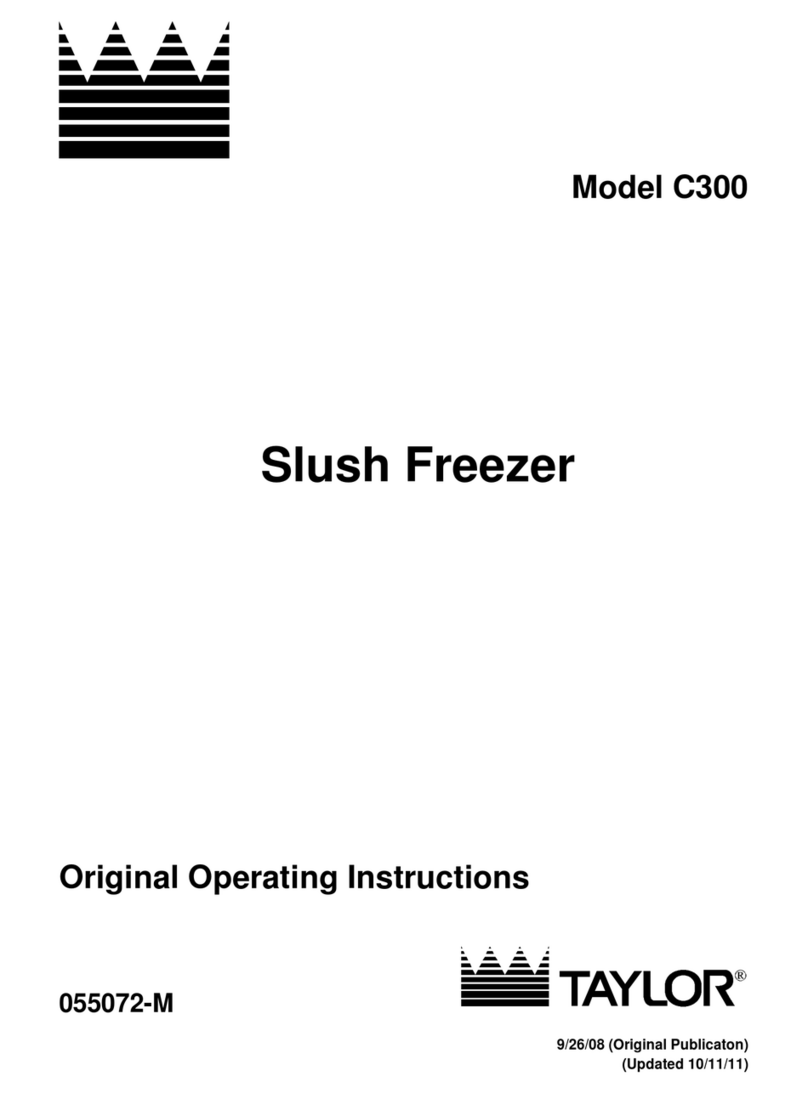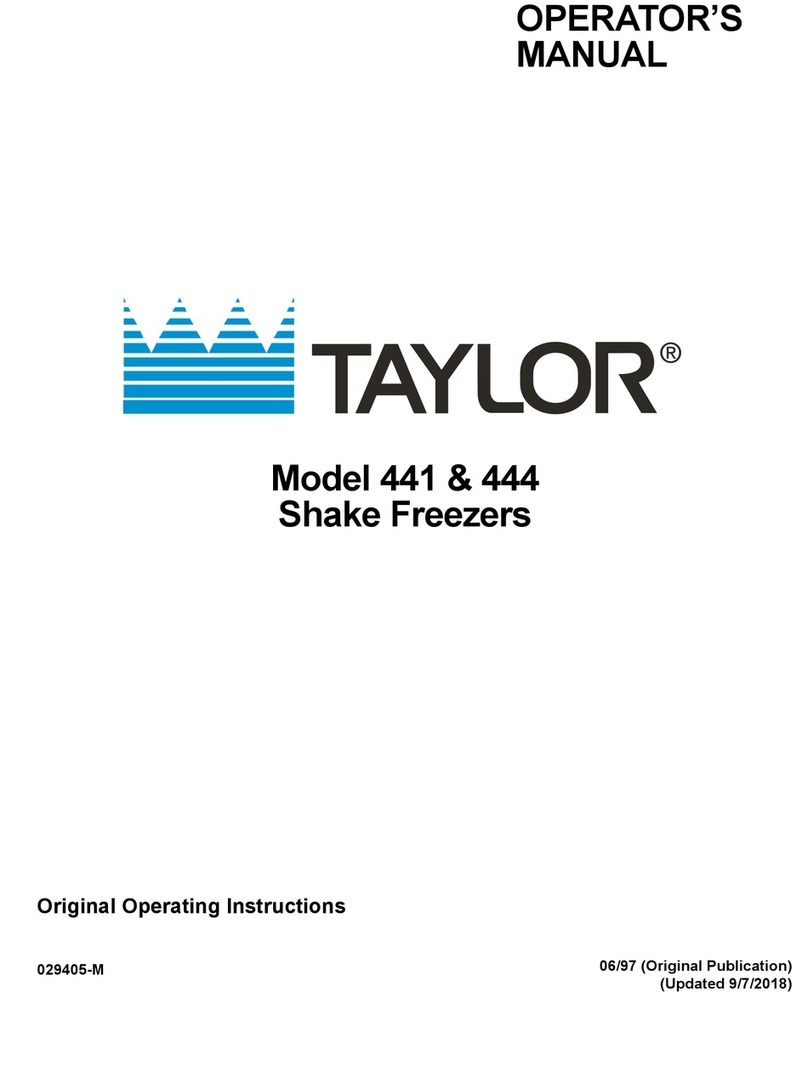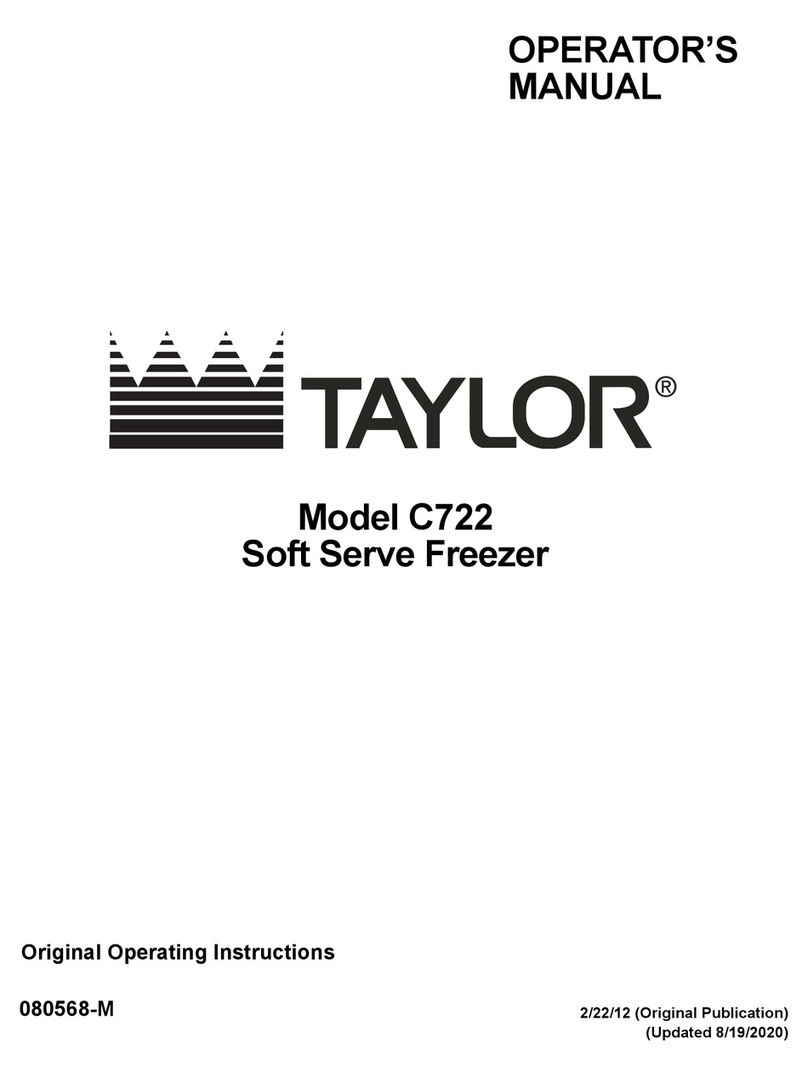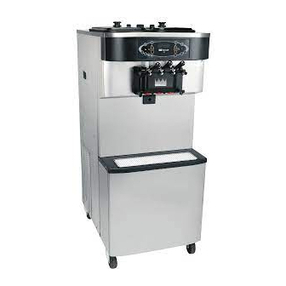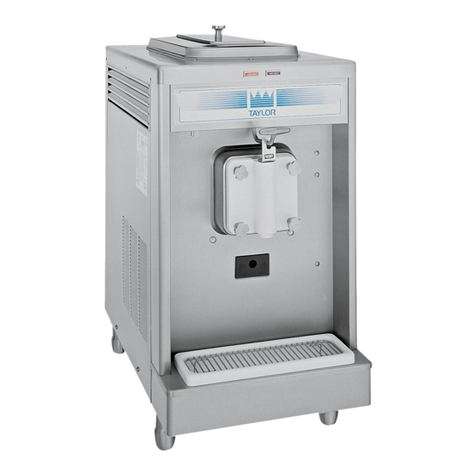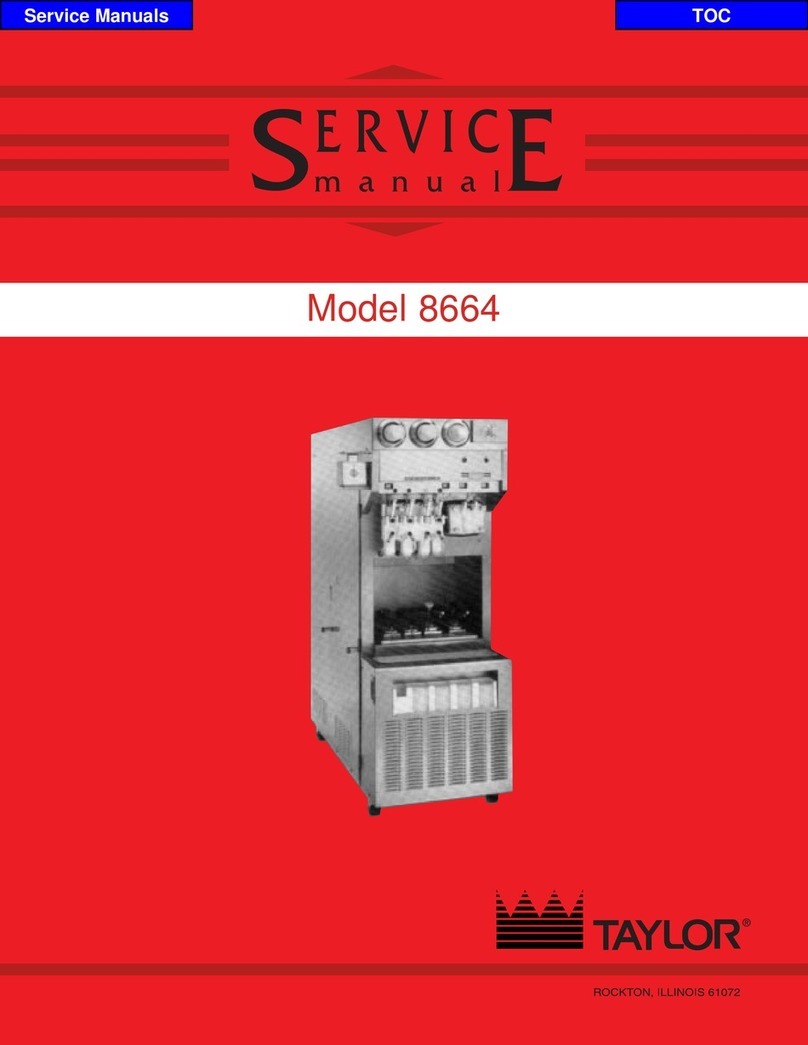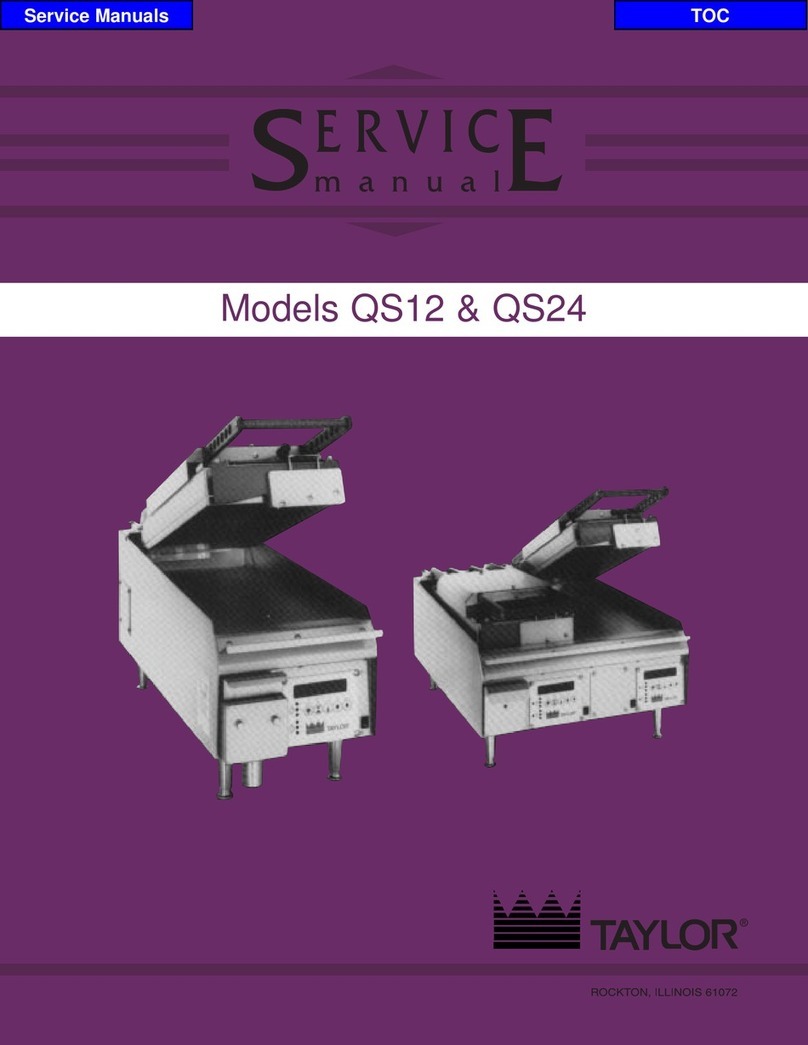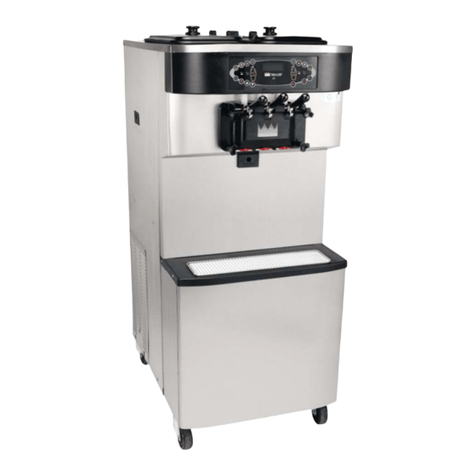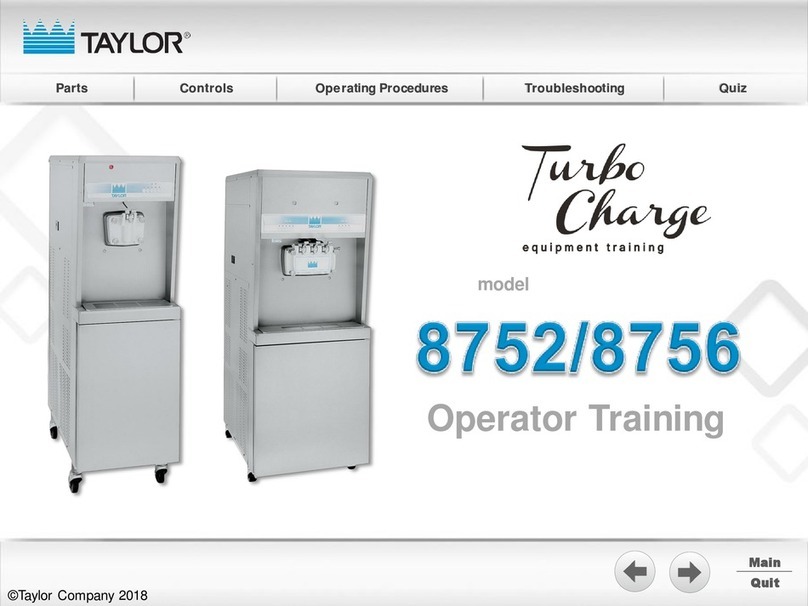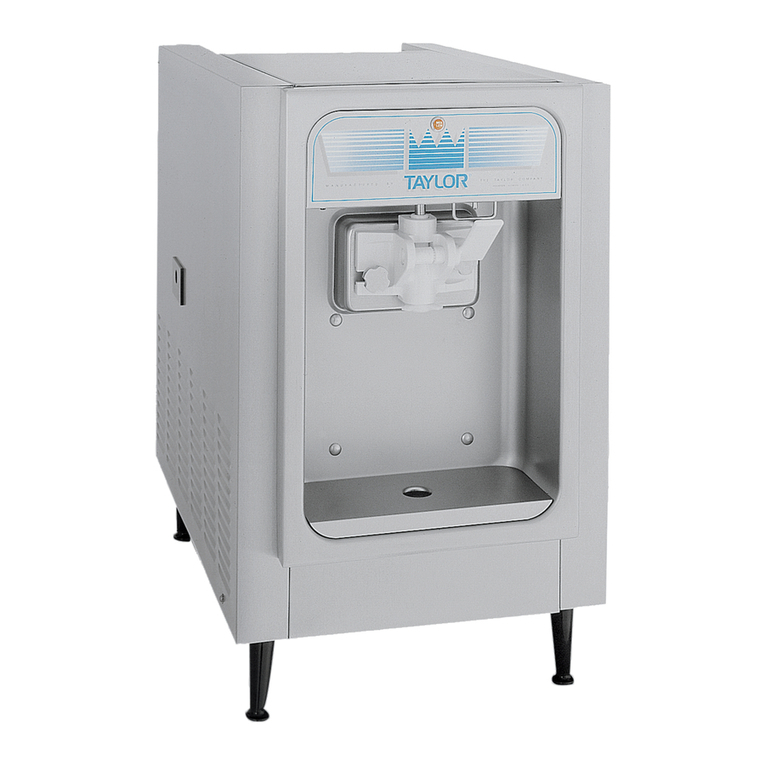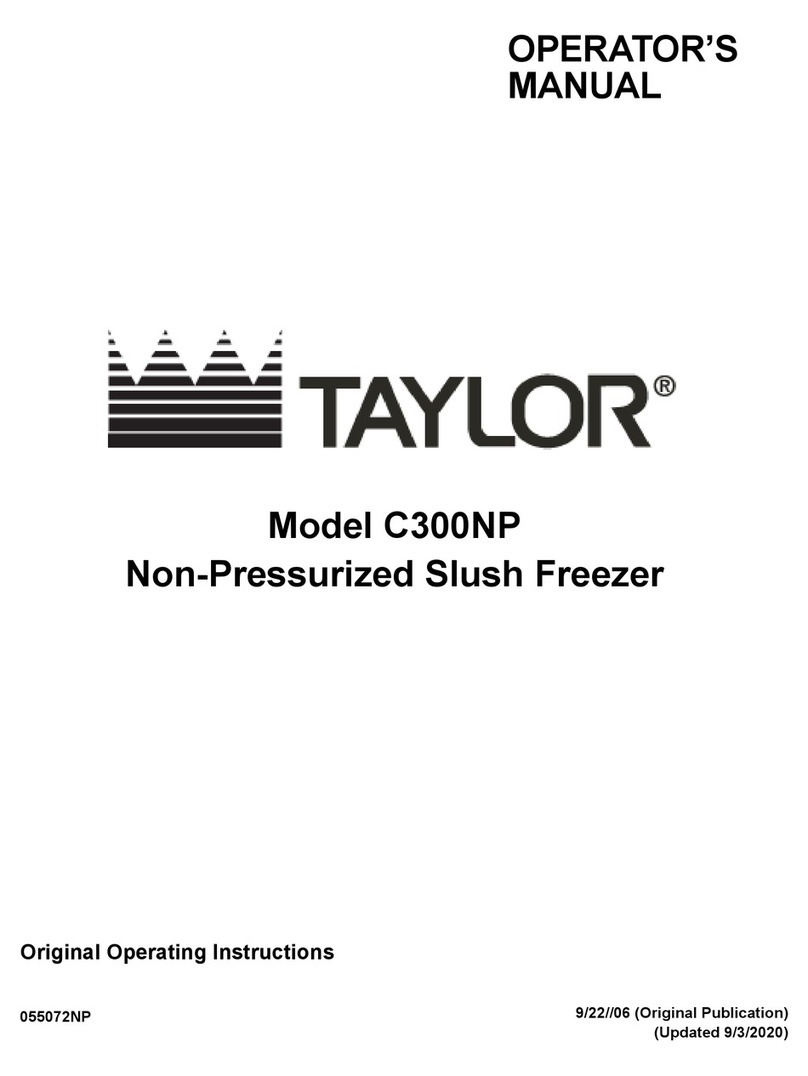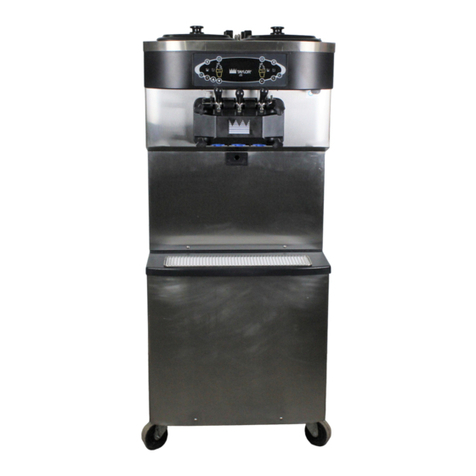2
Introduction Models 358 & 359
Safety
______________________________
We, at Taylor Company, are deeply committed to
manufacturing safe operating and serviceable
equipment. The many built-in safety features that
are part of all Taylor equipment are aimed at
protecting operators and trained service technicians
alike.
This manual is intended exclusively for
Taylor Company authorized service personnel.
DO NOT attempt to run the equipment
unless you have been properly trained to do so.
Failure to follow this instruction may result in
equipment damage, poor equipment performance,
health hazards, or personal injury.
CAUTION: THIS EQUIPMENT MUST BE
PROPERLY GROUNDED! Do not operate this unit
unless it is properly grounded and all service panels
and access doors are restrained with screws. Failure
to do so can result in severe personal injury from
electrical shock!
SDO NOT attempt any repairs unless the
main power supply to the unit has been
disconnected.
SDO NOT operate the unit with larger fuses
than specified on the data label.
SStationary appliances which are not
equipped with a power cord and a plug or
other device to disconnect the appliance
from the power source must have an all-pole
disconnecting device with a contact gap of
at least 3 mm installed in the external
installation.
SAppliances that are permanently connected
to fixed wiring and for which leakage
currents may exceed 10 mA, particularly
when disconnected, not used for long
periods, or during initial installation, shall
have protective devices such as a GFI to
protect against the leakage of current, and
be installed by authorized personnel to the
local codes.
SSupply cords used with this unit shall be
oil-resistant, sheathed flexible cable, not
lighter than ordinary polychloroprene or
other equivalent synthetic
elastomer-sheathed cord, (Code designation
60245 IEC 57) installed with the proper cord
anchorage to relieve conductors from strain,
including twisting, at the terminals and
protect the insulation of the conductors from
abrasion.
Failure to follow these instructions may result in
electrocution or damage to the unit.
This unit is provided with an equipotential
grounding lug that is to be properly attached to
either the rear of the frame or the under side of the
base pan near the entry hole for incoming power, by
the authorized installer. The installation location is
marked by the equipotential bonding symbol (5021
of IEC 60417-1) on both the removable panel and
the equipment's frame, as well as on the diagram.
DO NOT remove the freezer door or any
internal operating parts (examples: beater, scraper
blades, etc.) unless all control switches are in the
OFF position. Failure to follow these instructions
may result in severe personal injury from hazardous
moving parts.
THIS UNIT HAS MANY SHARP EDGES
THAT CAN CAUSE SEVERE INJURIES.
This unit must be installed on a level
surface to avoid the hazard of tipping. Extreme care
should be taken in moving this equipment for any
reason.
Two or more people are required to safely move this
unit. Failure to comply may result in personal injury
or equipment damage.
